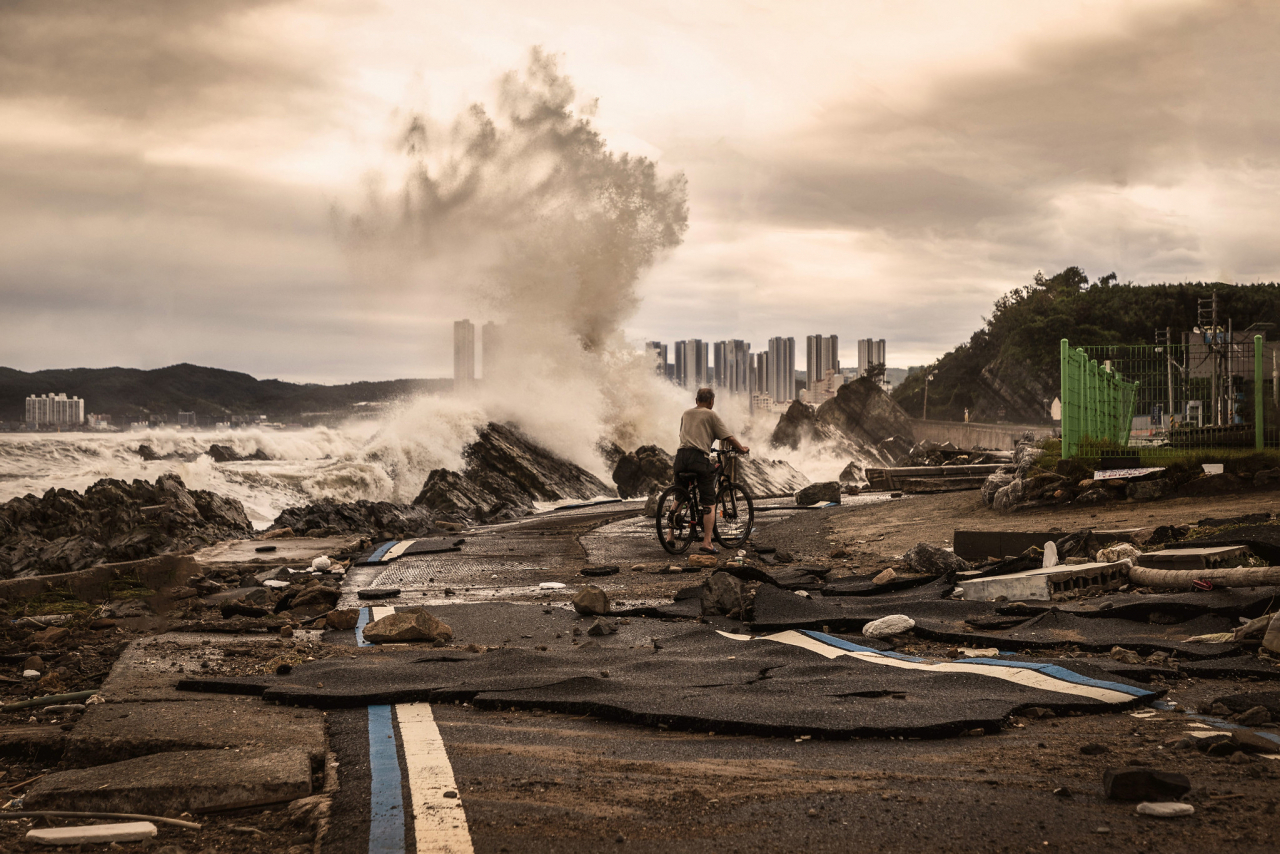Guidelines introduced to prevent deaths from extreme summer weather
9 typhoons' names retired after storms had particularly severe impact
By Lee Jung-joo
Published : May 14, 2024 - 16:49

The government will focus its efforts on preventing further loss of human lives during periods of heavy rain and heat waves for the upcoming summer season, the Ministry of Interior and Safety said Tuesday.
The Interior Ministry convened a joint meeting on the same day with officials from the Ministry of Environment, the National Fire Agency, the Korean National Police Agency and local governments to discuss strategies for preventing human casualties from natural disasters during the summer season and to assess the readiness of local governments and government agencies to implement these measures.
During the meeting, the Interior Ministry instructed inspections on slopes, rivers and underground areas to prevent incidents from occurring due to heavy rain and typhoons. According to the Interior Ministry, out of the 170 deaths and disappearances caused by heavy rain and typhoons over the last 10 years, 128 caused by landslides, river flooding or flooding of underground areas.
After conducting the inspections, the ministry urged the agencies to eliminate any hazards found in advance and to better assist in evacuating those near hazardous areas when heavy rain or a typhoon is expected.
To quickly respond to urgent situations, the Interior Ministry instructed local governments to designate those at the director level or above to manage emergency situation rooms and to operate a response system centered on deputy mayors to strengthen the management of emergencies.
The Interior Ministry also asked relevant ministries and local governments to inspect the temporary facilities installed on rivers for construction to ensure that there are no flooding or overflowing risks.
The ministry’s measures come after the fatal flooding of an underpass in Osong-eup, North Chungcheong Province, in July 2023 which had 14 casualties. The failure of the drainage pumps and the inability of authorities to mount a quicker response are said to have exacerbated the incident.
For those vulnerable to heat waves, such as farmers, fishermen and field workers, the Interior Ministry also said that it would provide cooling equipment and cooling shelters to mitigate the heat of summer. When the highest “serious” heat alert is issued, construction workers will be advised to stop work i mmediately.
Meanwhile, the Korea Meteorological Administration also announced Tuesday that typhoons that have caused serious harm in recent years will be renamed, as a “reflection of international desire to prevent a recurrence of similar severe typhoon damages.”
Typhoons are named to avoid confusion between different storms, as multiple typhoons can occur in the same region at the same time. There are 14 names in use, 10 from each of the 14 member countries of the Typhoon Committee, resulting in 140 typhoon names in total. The names are used in rotation, returning to the beginning of the list when all 140 are used.
The names of typhoons with particularly serious consequences have been retired, to show resolve to deal with future storms more effectively, prevent confusion, and avoid stirring up trauma for the victims of past storms.
According to the KMA, nine typhoon names were replaced during this year’s 56th plenary session of the Typhoon Committee, including Megi and Hinnamnor. Typhoon Megi heavily affected the Philippines, Taiwan and China in 2010. Typhoon Hinnamnor impacted South Korea, Japan, Taiwan, the Philippines and Russia in 2022.
The Typhoon name Megi will be replaced with Gosari, while the name Hinnamnor will be replaced with Ong Mang, meaning “deer” in Lao.
After Typhoon Doksuri heavily affected China and the Philippines in July 2023, that name was also retired from the list and will be replaced during the 57th plenary session of the Typhoon Committee in February 2025.



![[Feature] Ignorance about Africa still rampant in Korea](http://res.heraldm.com/phpwas/restmb_idxmake.php?idx=644&simg=/content/image/2024/05/28/20240528050572_0.jpg&u=20240528164942)














![[Herald Interview] Heritage chief eyes fashioning ‘the old’ to modern tastes](http://res.heraldm.com/phpwas/restmb_idxmake.php?idx=652&simg=/content/image/2024/05/29/20240529050518_0.jpg&u=20240529171555)
